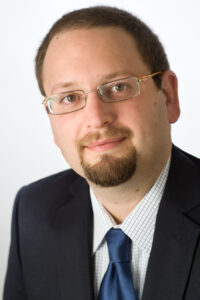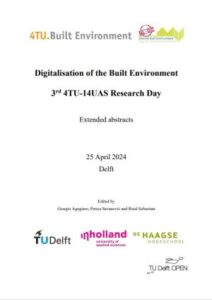
As cities worldwide face mounting challenges like population growth, housing shortages, and climate change, large-scale sustainable transitions of the built environment are urgently needed. From adopting renewable energy to using circular materials and constructing climate-resilient infrastructure, digitalisation has the potential to transform cities. The annual 4TU-14UAS Research Day on Digitalization of the Built Environment is a platform for innovative research in this field. A book of conference proceedings from the 3rd edition of the event was recently released through TU Delft OPEN Publishing, co-edited by Giorgio Agugiaro, assistant professor in the 3D Geoinformation group at TU Delft.
Digital replicas
Urban digital twins can enhance safety within a city by providing a dynamic, real-time virtual representation of physical infrastructure, allowing city planners, emergency responders, and policymakers to make informed decisions. Additionally, by creating an accurate virtual replica of a building, facility managers can, for example, monitor energy consumption in real time, detect inefficiencies, and simulate changes to optimise energy use.
Through his research, Agugiaro explores how such digital technologies can create safer, more sustainable, and smarter cities. His work on digital twins and their applications is focused on making cities more sustainable and energy-efficient. “In short, what we create are digital replicas of cities or buildings with different levels of detail. In my work, the big picture is reducing energy consumption and making everything a little bit more sustainable,” he explains. “And the more you know, the better you can make decisions.”
Evolving research
The potential of digital twins, and digitalisation in general, extends beyond safety and sustainability into the realms of Artificial Intelligence (AI), Robotics, and Augmented/Virtual Reality. These technologies offer new ways to understand and manage the built environment. However, as Agugiaro emphasises, the field requires continuous research and collaboration. This necessity is one of the driving forces behind the annual 4TU-14UAS Research Day on Digitalization of the Built Environment. It is an initiative organised by the 4TU.Built Environment group—a collaboration between the four Dutch universities of technology (4TU) and fourteen universities of applied sciences (14UAS). The Research Day is a platform for fostering knowledge exchange between academics, professionals, and students in the field.
Collaboration is critical
The 3rd Research Day, held in April 2024 and co-organised by InHolland University of Applied Sciences, The Hague University of Applied Sciences, and TU Delft, was another step in advancing collaborative efforts. Researchers presented their latest findings on topics ranging from digital twins to AI and circular materials in the context of building sustainable cities. The event culminated in the publication of an open-access book containing blind peer reviewed extended abstracts, documenting the ongoing research from the conference. Agugiaro co-edited the book together with colleagues from InHolland and The Hague University of Applied Sciences.
Having also contributed to the organisation of the event, Agugiaro emphasised the importance of collaboration in driving innovation. “Collaboration is critical in our field because it avoids duplicating efforts and reinventing the wheel and it allows us to tackle the bigger picture together,” he says. The event organisers adopted an inclusive approach by encouraging not only professors but also students and PhD candidates together with supervisors to contribute to the conference. By doing so, they aim to help bridge the perceived gap between traditional universities and universities of applied sciences.
Documenting progress
The conference also placed a strong emphasis on digitalisation as a catalyst for sustainable transitions. Digital tools such as AI, Robotics, and Digital Twinning have the potential to accelerate the adoption of renewable energy, bio-based materials, and climate-resilient infrastructure. The recently published book captures this range of topics, offering a snapshot of the current research landscape. Agugiaro also notes, “It is keeping track of what we as a Dutch network are doing little by little. It is an evolution process, and documenting year after year how things evolve is an important outcome.” For Agugiaro and his colleagues, the collaborative nature of the book is one of its most valuable aspects. They wanted to find a mediation between academia and applied sciences, he explained, and that is exactly what the book achieves. “The goal is to put on record what’s going on,” says Agugiaro. “We may not come up with final solutions, but we are documenting our research and how things evolve over time.”
Community effort
Digitalisation is reshaping the built environment, offering solutions to some of the most pressing urban challenges. For researchers and professionals involved in digitalisation, the annual Research Day represents an opportunity to share insights, foster partnerships, and develop new approaches to tackling these challenges. As Agugiaro points out, “A single person or a single group can’t do everything—things are too complicated today, especially in the digitalisation world. We are a community, and communities don’t work as pillars, but should mingle.” This underscores the importance of initiatives like the Research Day in creating a collaborative, interdisciplinary community focused on sustainable urban development.
Looking ahead, the 4TU and 14UAS collaboration will continue to play an important role in moving these conversations forward. With a fourth Research Day – and a fourth book – planned for 2025, the network aims to build on the foundation laid by previous conferences, ensuring that digital tools continue to evolve and contribute to a more sustainable future for cities and communities alike.

